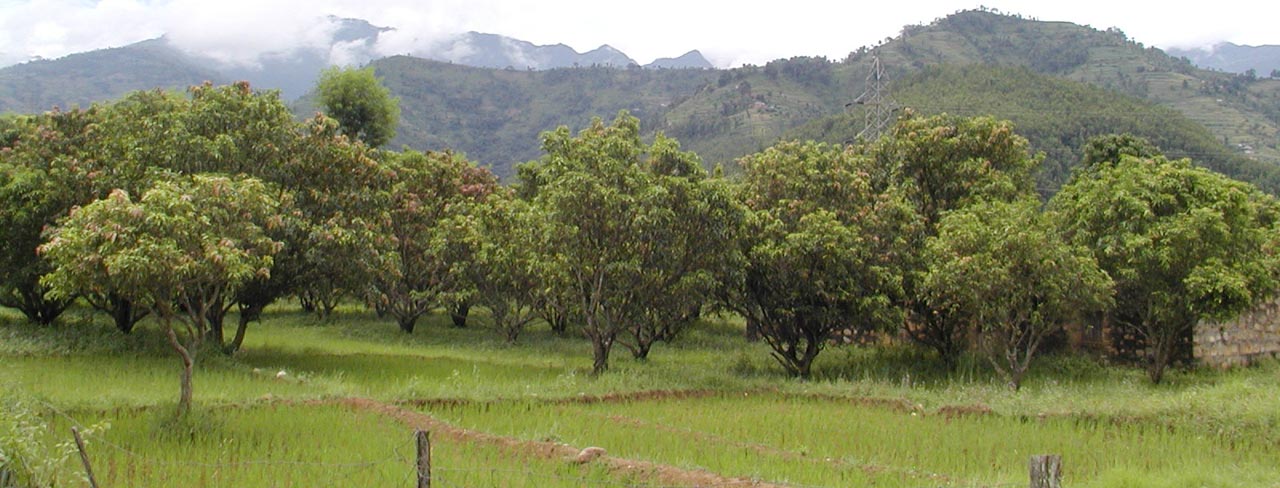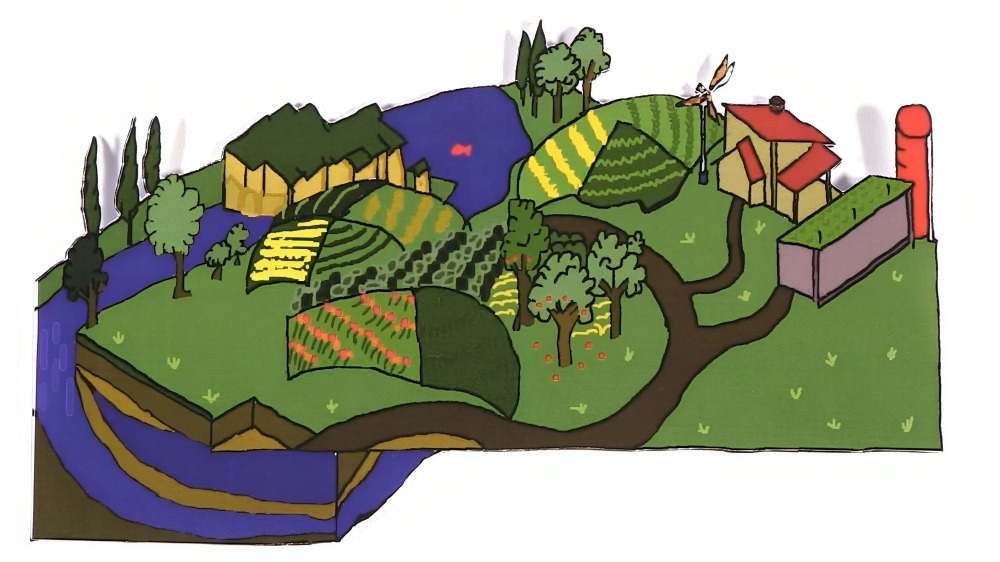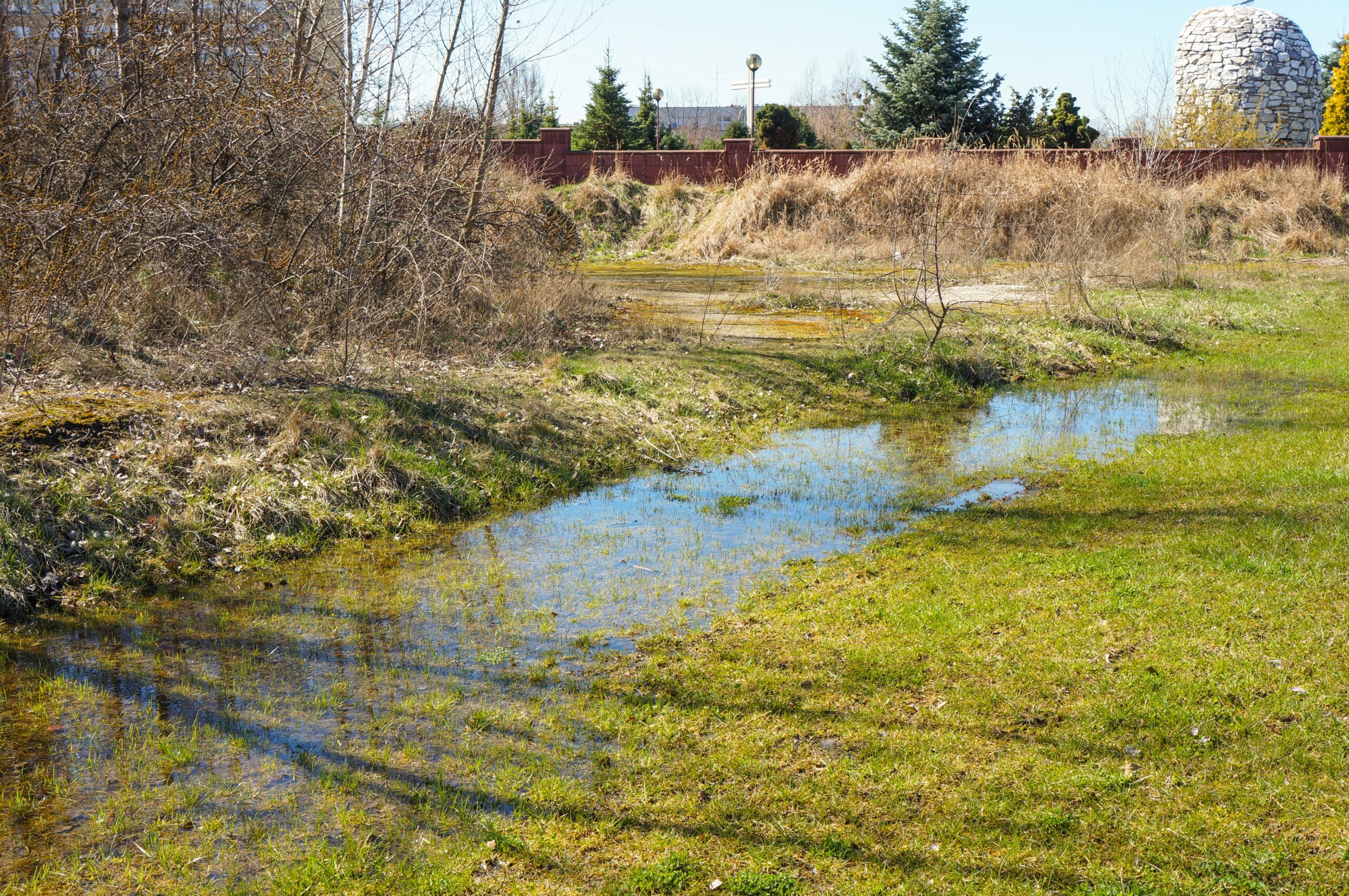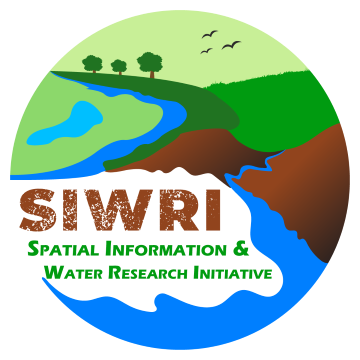Introduction
As the world grapples with the escalating climate crisis, the spotlight has turned to agriculture, an industry that paradoxically both sustains us and threatens our continued existence. The Intergovernmental Panel on Climate Change (IPCC) unequivocally declares it a major contributor to greenhouse gas emissions, comprising a staggering 23% of the global total, trailing only behind the energy sector. This alarming reality necessitates a paradigm shift in agricultural practices, steering away from conventional methods with proven environmentally harmful consequences. The world confronts an unparalleled environmental crisis fueled by unsustainable land management, primarily within the agricultural sector. To address this, we must embrace sustainable land management practices that foster environmental health, social equity, and economic prosperity. Agroforestry, integrating trees into farmland, emerges as a promising solution to this multifaceted crisis.
“Land plays an important role in the climate system,” said Jim Skea, Co-Chair of IPCC Working Group III. “Agriculture, forestry and other types of land use account for 23% of human greenhouse gas emissions. At the same time natural land processes absorb carbon dioxide equivalent to almost a third of carbon dioxide emissions from fossil fuels and industry,” he said.”
Jim Skea, Co-Chair of IPCC Working Group III Tweet
The include contents in this Agroforestry blog:
- What is Agroforestry
- Agroforestry Classification
- Benefits of Agroforestry
- Challenges in Adopting Agroforestry Practices
Beyond Industrial Transformation: The Call for Agricultural Revolution
Addressing the climate crisis extends beyond transforming energy and manufacturing. A vital agricultural revolution is imperative, recognizing that these sectors not only contribute to environmental degradation but also harbor solutions. Unlike isolated industrial changes, this revolution calls for holistic transformations in farming and forestry practices. It entails reimagining cultivation methods, embracing sustainability, and integrating eco-friendly forestry. This paradigm shift emphasizes harmonious coexistence with nature, underscoring the need to reshape the fundamental foundations of how we cultivate and interact with the land for a sustainable future.
What is Agroforestry?
“Agroforestry” merges agriculture and forestry, creating a symbiotic blend that enhances environmental sustainability, social benefits, and economic gains. By strategically integrating trees into farmlands, agroforestry conserves soil, combats climate change, and fosters biodiversity. It also diversifies farmers’ income with products like fruits and timber, showcasing a commitment to holistic sustainability that considers the interconnected nature of ecological, social, and economic dimensions in agriculture.
Agroforestry Classifications
Agroforestry systems can be classified into three main categories:
- Silvoarable systems
- Silvopastoral systems
- Agro-silvopastoral systems
1. Silvoarable Agroforestry systems
In these integrated systems, trees and crops coexist, forming a dynamic agricultural environment. Trees offer shade and wind protection, fostering optimal conditions for crop growth. Moreover, their roots delve deep, preventing soil erosion and enriching the soil with essential nutrients, contributing to a sustainable and productive farming ecosystem.
Images: Silvoarable Agroforestry Systems
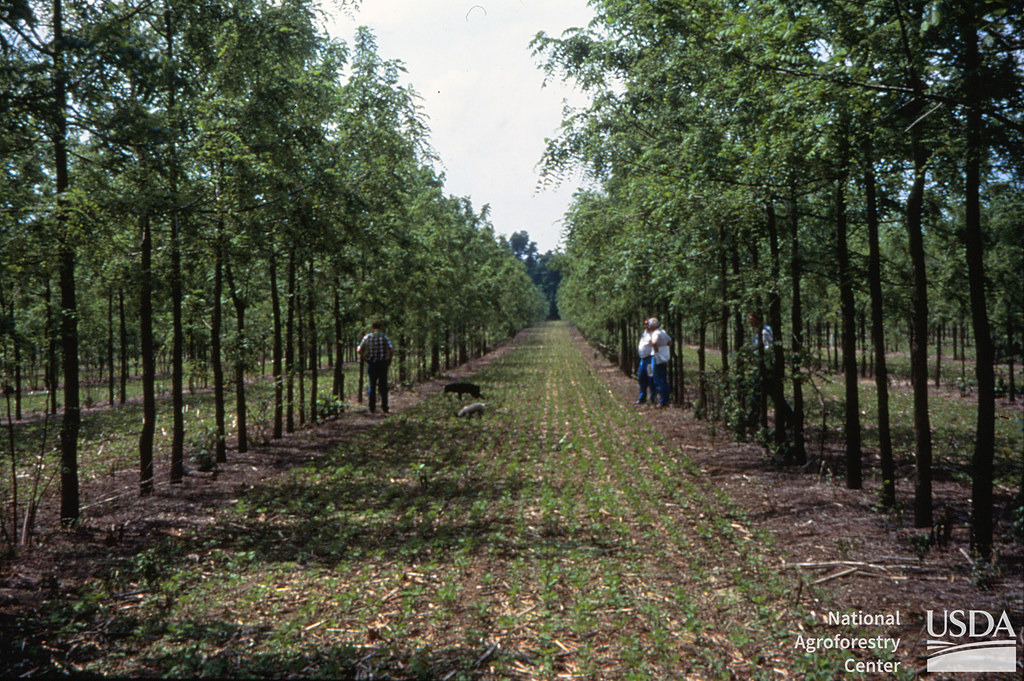
Silvoarable Agroforestry Systems: Alley cropping walnut and soybeans. East to west is best to maintain sunlight in alleys. Missouri, USA.
Photographer: Natural Resources Conservation Service
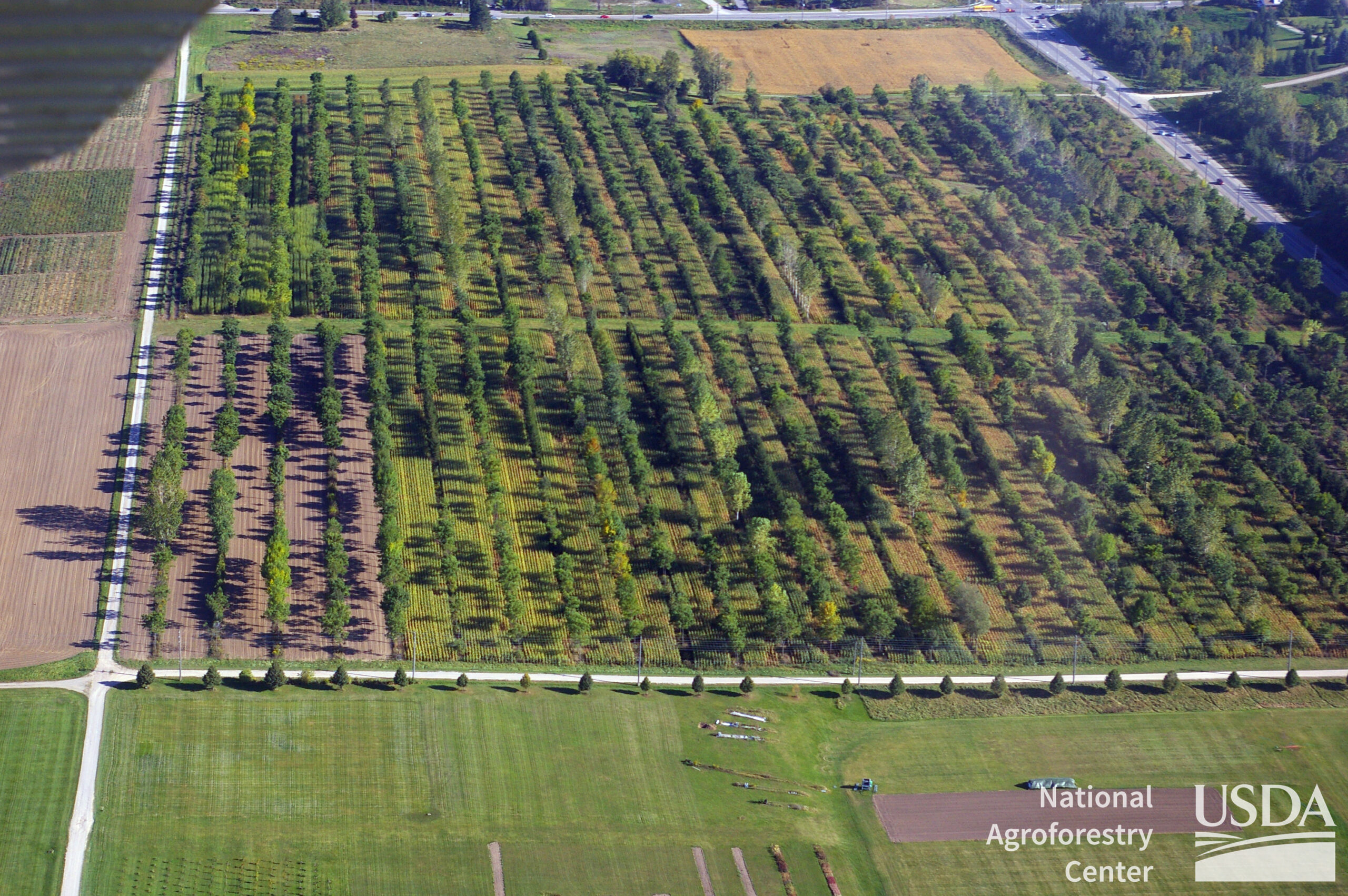
Silvoarable Agroforestry Systems: Alley Cropping research plots. Guelph, Canada.
Photographer: Naresh Tevathasan, University of Guelph, Canada.
2. Silvopastoral Agroforestry systems
Combining trees with livestock grazing, these systems create a balanced environment. Trees provide crucial shade and shelter for animals, enhancing their well-being. Additionally, they improve forage quality, preventing overgrazing and promoting sustainable practices in livestock management.
Images: Silvopastoral Agroforestry Systems
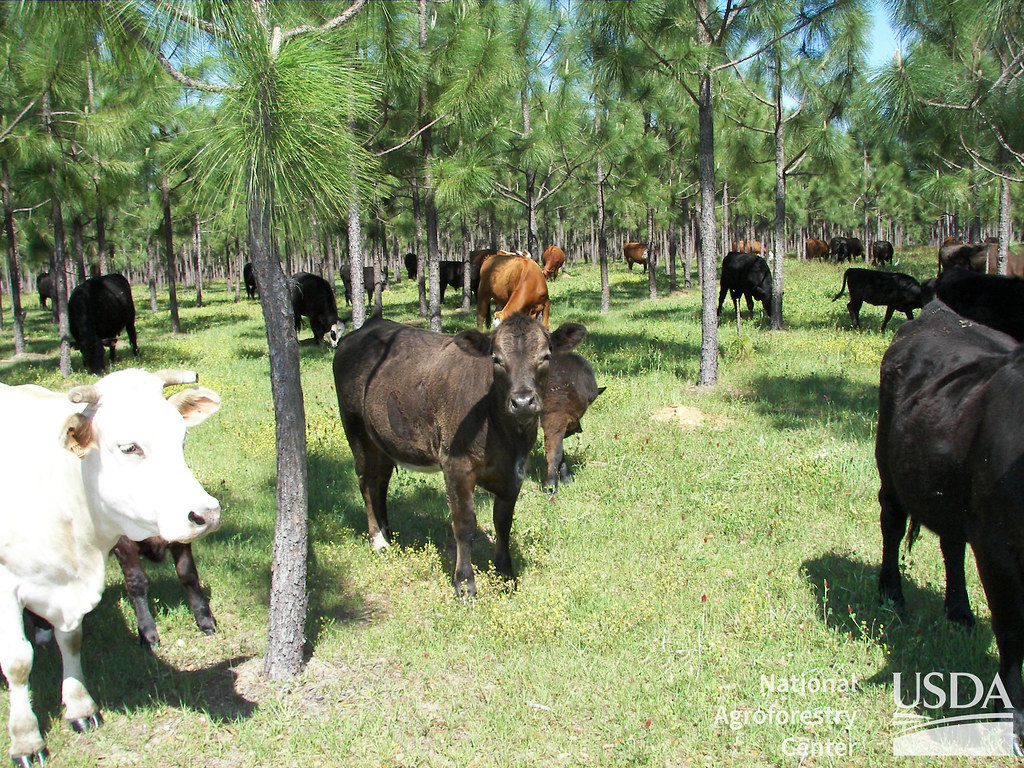
Silvopastoral Agroforestry Systems in Georgia: Combining trees with livestock grazing
Photographer: Mack Evans, Private landowner

Silvopastoral Agroforestry Systems: Combining trees with livestock grazing
Photographer: Mr. Stephens farm
3. Agro-silvopastoral Agroforestry systems
The pinnacle of integration, these systems harmonize trees, crops, and animals, fostering a diverse and highly productive agricultural landscape. This intricate combination maximizes the benefits of each component, creating a sustainable and resilient ecosystem that addresses environmental, economic, and social aspects of agriculture.
Video: Introduction to Agroforestry
Benefits of Agroforestry
In contrast to traditional agriculture, which often involves the removal of trees, integrating trees into farmlands brings about a range of positive outcomes. Agroforestry presents numerous advantages that effectively tackle both environmental and agricultural challenges.
These benefits include:
- The Vital Role of Trees in Sustainable Agriculture
- Harnessing Trees for Sustainable Agriculture and Animal Well-Being
- Agroforestry Strategies for Diversified and Sustainable Farm Income
- The Role of Agroforestry in Carbon Sequestering
1. The Vital Role of Trees in Sustainable Agriculture
In conventional farming, tree removal contributes to widespread erosion, particularly in hilly terrain. Contrastingly, trees in farmlands offer a plethora of benefits to both crops and animals. Their extensive root systems enhance water infiltration, reducing water-logging and runoff, resulting in a substantial decrease in erosion rates. Additionally, trees absorb nutrients from deeper layers, preventing fertilizer and manure leakage into groundwater. This underscores the critical role of trees in sustainable agriculture, not only preserving the topography but also ensuring efficient water management and nutrient retention for a more resilient farming ecosystem.
2. Harnessing Trees for Sustainable Agriculture and Animal Well-Being
The canopies of trees function as natural windbreaks, diminishing the evaporation of nearby vegetation and providing shelter for improved animal welfare. Introducing trees into agricultural landscapes not only fosters biodiversity but also aids in biological pest control. By attracting birds that feed on harmful pests like caterpillars, this symbiotic relationship enhances the ecological balance of the environment. Embracing the protective role of tree canopies proves pivotal in creating a sustainable agricultural ecosystem, promoting animal well-being, preserving biodiversity, and naturally mitigating pest-related challenges for farmers.
3. Agroforestry Strategies for Diversified and Sustainable Farm Income
Trees play a pivotal role in diversifying a farmer’s income sources by offering a myriad of products. From providing fodder for livestock and nutritious fruits and nuts to serving as sources of firewood and timber, trees contribute to a versatile revenue stream. However, unlike annual crops, trees generally yield returns at a slower pace, often taking several years to become financially rewarding. This poses a significant challenge for farmers, particularly those who rely on rented land rather than owning it. Despite the delayed returns, embracing agroforestry becomes a patient yet lucrative investment for sustainable and diversified agricultural income.
4. The Role of Agroforestry in Carbon Sequestering
Agroforestry emerges as a powerful ally in the global effort to address climate change through the impactful process of carbon sequestering. At its core, carbon sequestering refers to the absorption and storage of carbon dioxide, a major greenhouse gas, by trees in agroforestry systems. These integrated agricultural and forestry practices harness the natural ability of trees to perform photosynthesis, drawing carbon dioxide from the atmosphere and storing it in their biomass. This not only aids in reducing overall greenhouse gas emissions but also contributes to the establishment of resilient ecosystems. The strategic combination of agriculture and forestry in agroforestry not only enhances soil fertility and biodiversity but actively promotes environmental sustainability. By recognizing the significance of carbon sequestering in agroforestry, we pave the way for a more sustainable and climate-resilient future, where agriculture becomes a key player in mitigating the impacts of climate change.
In summary, below are some key benefits to remember
- Enhanced productivity: Agroforestry systems can increase crop yields and improve livestock health and productivity. Trees provide shade, regulate soil moisture, and reduce soil erosion, contributing to better crop growth.
- Improved soil health: Trees contribute to soil organic matter enrichment, enhance nutrient cycling, and improve soil structure, leading to healthier and more fertile soils.
- Reduced greenhouse gas emissions: Agroforestry systems sequester carbon dioxide from the atmosphere, mitigating the effects of climate change. Trees absorb carbon dioxide through photosynthesis and store it in their biomass.
- Enhanced biodiversity: Agroforestry systems create diverse habitats that support a wide range of plant and animal species, contributing to biodiversity conservation.
- Economic diversification: Agroforestry provides farmers with a diverse range of income sources, including timber, fruits, nuts, and fodder, reducing their reliance on single crops.
Challenges in Adopting Agroforestry Practices
Agricultural policies often discourage agroforestry adoption by neglecting subsidies, favoring conventional monoculture systems. Simultaneously, forest regulations may ban the cutting or selling of tree products from farmland. This dual challenge poses hurdles for farmers seeking sustainable and diversified agricultural practices. Overcoming these policy and regulatory barriers is crucial for fostering a more supportive environment that encourages the widespread implementation of agroforestry, ultimately contributing to a more resilient and environmentally friendly agricultural landscape.
Conclusion
The impact of agroforestry on the environment, biodiversity, and long-term well-being is substantial. It champions sustainable land use, enhances biodiversity by providing diverse habitats, and simultaneously contributes to lasting prosperity by supporting both ecological health and agricultural productivity. Importantly, the inclusion of carbon sequestration through photosynthesis solidifies its role in mitigating greenhouse gas emissions, nurturing resilient ecosystems, and championing environmental sustainability. Agroforestry stands as a compelling solution to the manifold challenges facing agriculture and land management. The integration of trees into agricultural landscapes can elevate productivity, improve soil health, combat climate change, and protect biodiversity. The adoption of agroforestry practices calls for a collective effort involving policymakers, agricultural organizations, farmers, and consumers. Through collaborative endeavors, we can cultivate a sustainable future where agriculture sustains both humanity and the planet.
You may also want to read related Web-Stories: Click here to Web-Stories
Also read related blog: Rainwater Harvesting: A Land-Based Approach
References
- e-learning project of Hamburg University of Technology (TUHH) in cooperation with Hamburg Open Online University (HOOU)
- The Intergovernmental Panel on Climate Change (IPCC)

